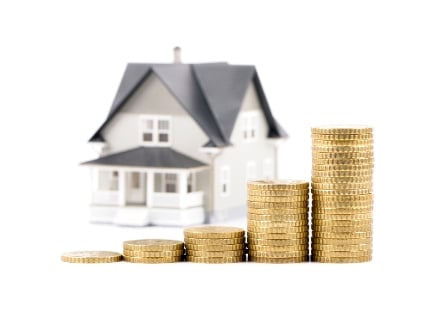Consumers’ loss of purchasing power means that house prices are an even bigger hit on the wallet, leaving buyers and sellers with a ‘prisoner’s dilemma’

A decline in purchasing power caused real house prices to increase in March, according to First American Financial.
Between February and March, real house prices went up 0.7% and increased year-over-year by 11.5%.
“Rising real house prices are a nationwide phenomenon, as real house prices increased in all 50 states and in every market we track,” said Mark Fleming, First American chief economist. “Many markets even experienced double-digit real house price increases in March, compared with a year ago. The supply in most markets is insufficient for this spring’s strong demand.”
Real house prices were still 32.5% behind their July 2006 housing-boom peak level and 9.3% below house prices in January 2000.
Nationwide, the five states with the biggest year-over-year increase in real house prices were Wisconsin, Michigan, Alabama, New York and Colorado; the states with the smallest increase were Nebraska, Tennessee, Massachusetts, Connecticut and Montana.
On the other hand, in March, unadjusted house prices rose 5.8%, year over year, and are 2.4% higher than the 2007 housing-boom peak level.
Homeowners are also wary of putting on their homes for sale, or as Fleming called it, the market is facing a ‘prisoner’s dilemma.’
“If everyone sells, there will be plenty of supply, but the risk of selling when others don’t, the inability to find a home to purchase at the right price, is preventing homeowners from putting their homes on the market,” he said. “The ‘prisoner’s dilemma’ in housing is restricting supply, causing increased house price appreciation and falling affordability.”
Related stories:
Americans’ house-buying power down
Between February and March, real house prices went up 0.7% and increased year-over-year by 11.5%.
“Rising real house prices are a nationwide phenomenon, as real house prices increased in all 50 states and in every market we track,” said Mark Fleming, First American chief economist. “Many markets even experienced double-digit real house price increases in March, compared with a year ago. The supply in most markets is insufficient for this spring’s strong demand.”
Real house prices were still 32.5% behind their July 2006 housing-boom peak level and 9.3% below house prices in January 2000.
Nationwide, the five states with the biggest year-over-year increase in real house prices were Wisconsin, Michigan, Alabama, New York and Colorado; the states with the smallest increase were Nebraska, Tennessee, Massachusetts, Connecticut and Montana.
On the other hand, in March, unadjusted house prices rose 5.8%, year over year, and are 2.4% higher than the 2007 housing-boom peak level.
Homeowners are also wary of putting on their homes for sale, or as Fleming called it, the market is facing a ‘prisoner’s dilemma.’
“If everyone sells, there will be plenty of supply, but the risk of selling when others don’t, the inability to find a home to purchase at the right price, is preventing homeowners from putting their homes on the market,” he said. “The ‘prisoner’s dilemma’ in housing is restricting supply, causing increased house price appreciation and falling affordability.”
Related stories:
Americans’ house-buying power down



